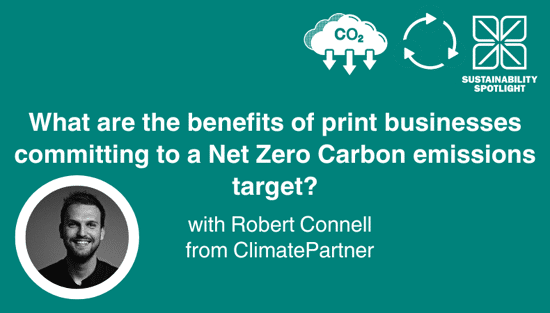How to assess and report your environmental sustainability

Laurel Brunner discusses how ISO has now approved a new project that will suppor the industry's sustainability. The new work, ISO 19311, provides requirements for sustainability assessment reporting and the idea is to make it easier to evaluate sustainability reports, like for like.
ISO’s committee for standards relating to the printing industry has approved a new project supporting the industry’s sustainability. The new work, ISO 19311, provides requirements for sustainability assessment reporting and the idea is to make it easier to evaluate sustainability reports, like for like. Currently it’s almost impossible to compare sustainability reports published by companies such as Heidelberg and HP. If a printing business is investing in new kit and wants to take the manufacturer’s commitment to sustainability into account, the comparison amounts to a serious and complicated faff.
The new document is based on the assumption that players in print media supply chains want tools to help them improve their sustainability reporting. It might be niave to make such an assumption, but doing it willingly is better than being obliged to do it through regulation. It won’t be so very many years before sustainability reporting is as important for businesses as financial reporting. Print media supply and distribution chains need help along the sustainable development learning curve to get familiar with how to identify, assess, measure and compare efforts towards improved environmental sustainability. This applies to service prividers, manufacturers and printing companies. Print buyers and publishers can also benefit.
The wider objective with ISO19311 is to support industry efforts throughout the sector towards climate change mitigation. The document’s focus is on environmental sustainability. It does not address the social and economic pillars of sustainability the United Nations has identified, because efforts made to improve environmental sustainability generally help economic and social sustainability as well. Users of ISO 19311 will be able to use a reporting and assessment model that is focused on transparency and continuous improvement. In that respect this new standard is heavily influenced by ISO 14001, for environmental management systems: both documents can encourage improved best practice. Focus on helping print media supply chains to identify sustainable development opportunities for their businesses should also help the industry’s overall environmental footprint.
The graphics industry has widely embraced ISO standards, the Portable Document Format (PDF) being perhaps the most obvious example. There is a healthy dialogue between the print industry and the authors of ISO 32001, the ISO document that describes PDF. This mechanism for sharing best practice is one that contributes to the improvement of standards over time, and one would hope that this will be true of the sustainability assessment document.
But it is very early days. Work has been underway on the draft for many months, and now that the project is approved work can begin in earnest. ISO TC 130, the ISO technical committee responsible for the graphics industry invites anyone interested to contribute to the work to get in touch with their local standards bodies.
This article was produced by the Verdigris Project, an industry initiative intended to raise awareness of print’s positive environmental impact. This weekly commentary helps printing companies keep up to date with environmental standards, and how environmentally friendly business management can help improve their bottom lines. Verdigris is supported by the following companies: Agfa Graphics, EFI, Fespa, Fujifilm, HP, Kodak, Miraclon, RicohSplash PR, Unity Publishing and Xeikon.
Topics
Recent news

What are the benefits of print businesses committing to a Net Zero Carbon emissions target?
We speak to Robert Connell, Senior Commercial Sustainability Manager at ClimatePartner who who offer solutions along the net zero cycle to support business’s effort in corporate climate action. In this discussion we discuss the importance and the process and benefits of businesses committing to a Net Zero Carbon emissions target.

6 Sustainable Printing Practices Changing the Game in Textile and Apparel Decoration
The textile industry is shifting towards sustainability. Innovations like waterless and digital printing, eco-friendly inks, and recycled materials are reducing waste. AI and automation optimise production, while circular models promote reuse. Consumer demand for transparency drives this change, making sustainable practices essential for future-focused brands.

Sustainability in Production Print: Advancing Practices in Wide Format, Textiles, and Software
As sustainability continues to take centerstage across industries, the production print sector is making massive strides in integrating eco-conscious practices. From wide format to textile applications, with the growing reliance on advanced production software, the space is evolving to meet environmental goals as well as consumer demand for sustainable products.

Why must the print industry recognise software and material innovation
Laurel Brunner argues that the printing industry must recognise the value of both software and material innovation, and be willing to pay for it. Software, though intangible, drives efficiency and reduces carbon footprints. While materials science currently dominates, R&D costs are inherent in all advancements. Paying a premium ensures continued progress, benefiting the industry's evolution and sustainability.